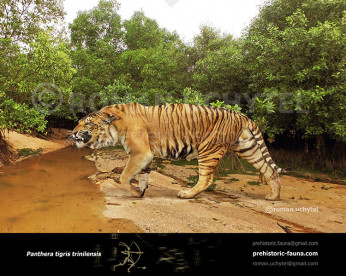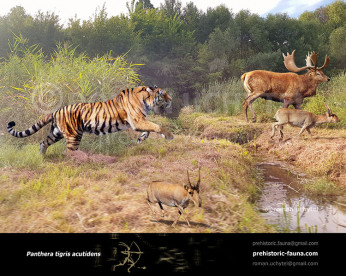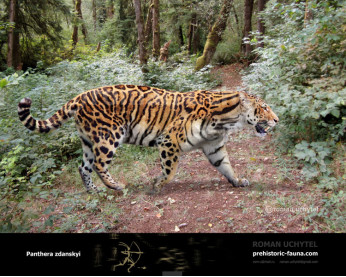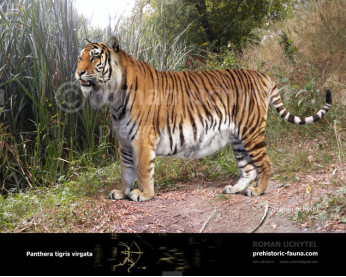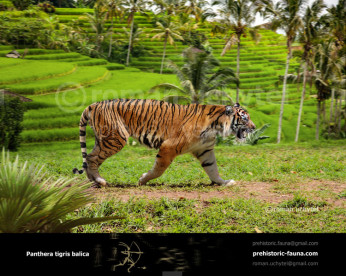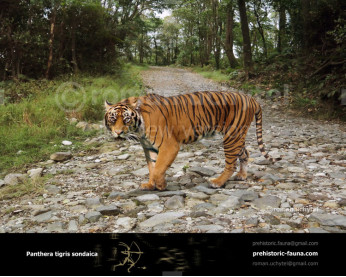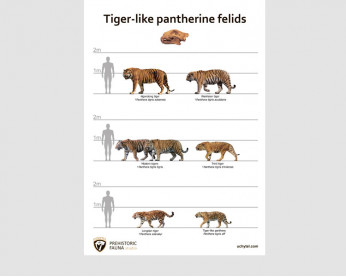Ngandong Tiger (Panthera tigris soloensis)
213213Ngandong tiger (†Panthera tigris soloensis Von Koenigswald,1933)
Order: Carnivora
Family: Felidae
Time period: first half of the late Pleistocene of Southeast Asia (195.000 years ago)
Size: 2.3 m in length, 120 cm in height, 180 - 350+ kg of weight.
East Asia was probably the center of origin Pantherinae. The oldest tiger fossils indicate that about two million years ago tigers were quite widespread in this region. However, the glacial and interglacial climatic variations and other geological events caused repeated changes in the geographic area. According to current information, the common ancestor of modern tiger is out of time parameters 157-72.000 years ago. This is much later than expected at the leopard, which is believed to be originated in Africa 825-470.000 years ago and arrived in Asia 300-170.000 years ago. Ngandong tiger was the largest subspecies of Panthera tigris. The body weight of this predator reached 350+ kg, and height at the withers - 120 cm. Nobody could argue with such a giant, except perhaps awful Mosbach lion (Panthera leo fossilis), which was even greater. According to the assumptions of the last of genetic research, the tigers have almost entirely disappeared at the end of the Pleistocene era, maybe around 10.000-12.000 years ago. The small remaining part of population survived, probably in the territory of modern China.
Ngandong Tiger is Endemic from Ngandong, Solo Region, Central Java Province, Indonesia. From this region the tigers again began to spread by migrating along the river following their prey closely - mainly deer and wild boars. Although the all continental tigers are closely related and can be considered as regional populations, rather than separate subspecies, they have developed definite physical and morphological properties to adapt to environmental conditions.
Igor Kazanov
Ngandong tiger (†Panthera tigris soloensis Von Koenigswald,1933)
Order: Carnivora
Family: Felidae
Time period: first half of the late Pleistocene of Southeast Asia (195.000 years ago)
Size: 2.3 m in length, 120 cm in height, 180 - 350+ kg of weight.
East Asia was probably the center of origin Pantherinae. The oldest tiger fossils indicate that about two million years ago tigers were quite widespread in this region. However, the glacial and interglacial climatic variations and other geological events caused repeated changes in the geographic area. According to current information, the common ancestor of modern tiger is out of time parameters 157-72.000 years ago. This is much later than expected at the leopard, which is believed to be originated in Africa 825-470.000 years ago and arrived in Asia 300-170.000 years ago. Ngandong tiger was the largest subspecies of Panthera tigris. The body weight of this predator reached 350+ kg, and height at the withers - 120 cm. Nobody could argue with such a giant, except perhaps awful Mosbach lion (Panthera leo fossilis), which was even greater. According to the assumptions of the last of genetic research, the tigers have almost entirely disappeared at the end of the Pleistocene era, maybe around 10.000-12.000 years ago. The small remaining part of population survived, probably in the territory of modern China.
Ngandong Tiger is Endemic from Ngandong, Solo Region, Central Java Province, Indonesia. From this region the tigers again began to spread by migrating along the river following their prey closely - mainly deer and wild boars. Although the all continental tigers are closely related and can be considered as regional populations, rather than separate subspecies, they have developed definite physical and morphological properties to adapt to environmental conditions.
Igor Kazanov

-797x638.jpg)

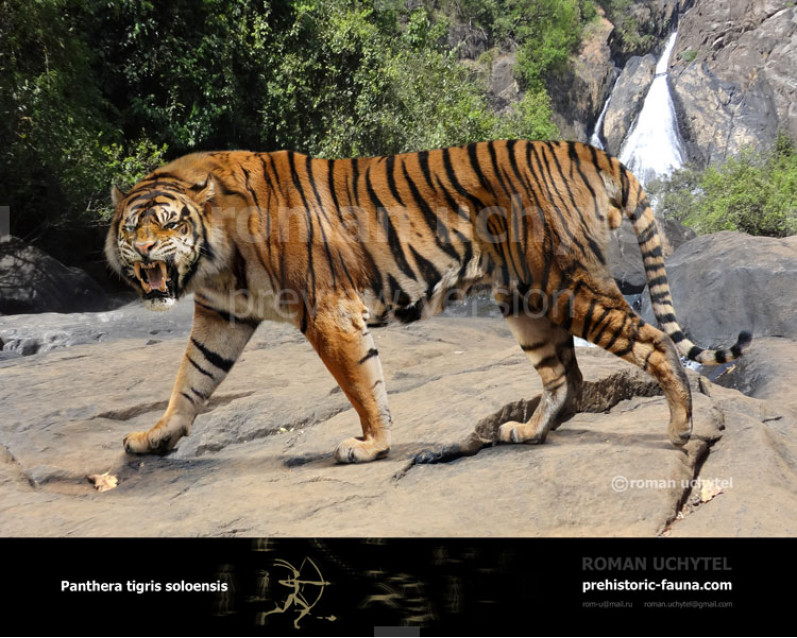


2-797x638.jpg)
3-797x638.jpg)
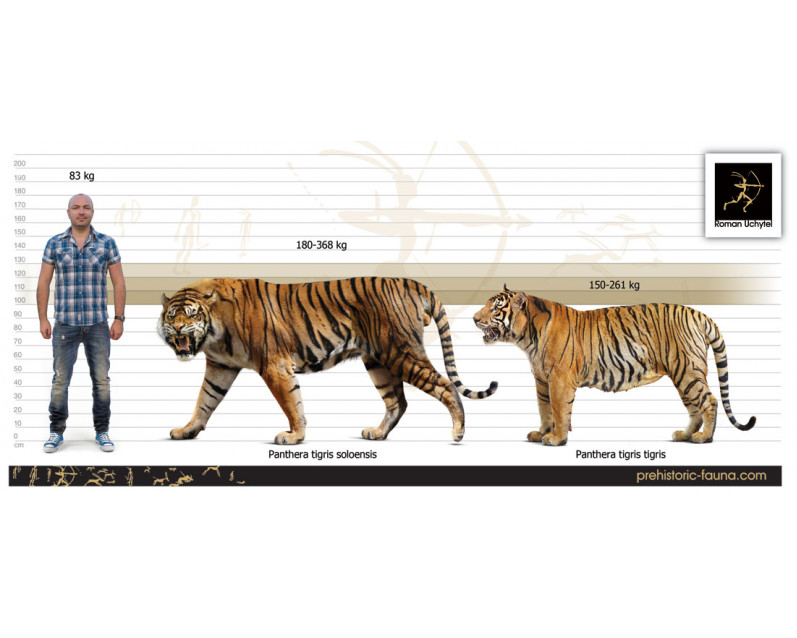
-70x56.jpg)




2-70x56.jpg)
3-70x56.jpg)

